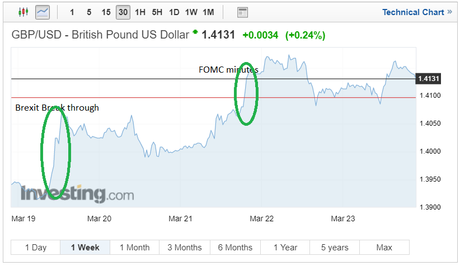As nearly everyone had anticipated, the US increased interest rates by 0.25% from 1.50% to 1.75 signalling the first US interest rate hike since last December. Despite the solid growth and an apparently strong labor market had been reluctant potentially due to underlying issues with wages and US inflation, plus of course a change in chairmanship from Janet Yellen to Jerome Powell.
Powell delivered his thoughts on the US economy and chaired his debut FOMC conference this week. Whilst initiating the first and wholly expected US interest rate hike market makers were looking for clues as to Powell’s approach and sentiment towards future interest rate hikes and their timings.
Jerome Powell delivers his first monetary minute’s conference
The previous chair Janet Yellen had often leant upon the US labor and while Powell acknowledged the strength of the US labor market he also confirmed he thought the market fell short of full health. Concerns also continue to surround the sluggish wage increases which currently are only registering growth of 2.6% upon last year.
The forecasts remained by the FED remained high with growth recalculated at 2.7% in 2019 up from 2.4% with scope for further upward revision.
Inflation’s forecast which continues to puzzle the FED remains unchanged and is expected to reach just 1.9% in 2018 and only increase slightly in 2019 when it is anticipated to reach 2%. Many would have been bewildered by this especially given the relatively upbeat forecasts for growth. Explaining his rationale on weak inflation Powell simply said that the inflation had been weak for years and that he couldn’t see this changing anytime soon.
How many further US interest rate hikes can we expect?
Many were left wondering what the Jerome Powell’s appetite would be for future US interest rate hikes. Before the FOMC conference rumours had circulated that the FED was planning to endorse four interest rate hikes rather than the three which were subsequently announced. Setting out its vision for growth and US interest hikes the FED officially targeted three further interest rate hikes between before 2020 which would take the target interest rate to 3.4%.
Powell confirmed that the FOMC sought to strike a balance and was opting for the continual slow and steady approach to future US interest rate hikes. The foundation of this policy, to essentially avoid an overheating of the US economy and further issues with inflation slipping further away from the FED’s ideal of 2%.
Causes of Dollar slump
Bizarrely the latest US interest rate hike had an abnormal effect on the US Dollar as well as other sectors of financial markets. The hike caused a notable sell-off of the US Dollar which many have attributed to comments Powell made on President Trumps recent tax cuts. Powell’s thoughts on the tax cuts essentially conflicted with Yellen’s sentiment with the new chair stating that the effects of the tax cuts were uncertain despite earlier forecasts that it would add significantly to the economy. Following the announcement, Pound-USD strengthened moving from 1.4080 to 1.4148. However, the largest movement in this currency pair was seen following the news that a UK and EU transition deal was likely to be signed at the recent summit.

The Australian Dollar has also struggled recently against the Dollar. Australia is one of the most exposed to Trump’s recent steel and aluminum tariffs and the AUD has been sold off significantly in recent weeks tumbling to a month low of 0.7678 the US interest rate hike did provide some respite for the AUD however the gains were short-lived, and the correction occurred just a few hours after the initial spike. The pair closing the week at 0.7699.


